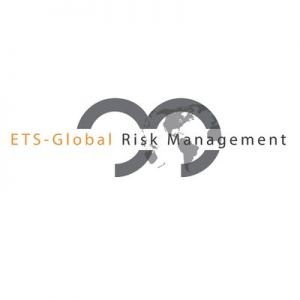Open Source Intelligence Analysis For Business Security
Posted by ETS Risk Management on September 20th, 2023
ETS leverages top-tier programs, databases, and APIs coupled with highly experienced analysts to scour the Open Source Intelligence arena and World Wide Web content not indexed by standard search engines. Searches are crafted and conducted to encompass both the general risk to a globally recognized brand and the range of potential threats, including but not limited to; international and domestic terrorist organizations, environmental activism, criminal organizations, and state threat actors, as well as the specific risk from those entities and others to the identified assets of the client.
Open Source Intelligence (OSINT) analysis is a critical component of business security, providing valuable insights and information gathered from publicly available sources. OSINT can help organizations identify potential threats, vulnerabilities, and risks, as well as opportunities for strategic decision-making. Here's a comprehensive guide on how businesses can leverage OSINT analysis for enhanced security:
Define Objectives and Scope:
Start by clearly defining your business's objectives for OSINT analysis. Determine what specific threats or risks you want to monitor, whether it's brand reputation, cyber threats, physical security, or competitive intelligence.
Data Collection:
Gather information from open sources such as websites, social media, forums, news articles, public records, and government websites. Tools and techniques like web scraping, social media monitoring, and subscription to OSINT services can aid in this process.
Data Validation and Veracity:
Ensure the information collected is reliable and accurate. Cross-reference data from multiple sources to verify its authenticity and confirm facts before drawing conclusions.
Threat and Risk Assessment:
Analyze the collected data to identify potential threats and risks. This could include assessing online sentiment, tracking emerging trends, and monitoring mentions of your business or key personnel.
Competitive Intelligence:
Use OSINT to gain insights into your competitors' activities, product developments, market strategies, and customer sentiment. This information can inform your own strategic decisions.
Cybersecurity Monitoring:
Regularly scan the internet for mentions of your organization in relation to cyber threats. This includes monitoring for leaked credentials, data breaches, and discussions about your IT infrastructure.
Brand Reputation Management:
Keep an eye on social media platforms and online communities for mentions of your brand. Address any negative publicity or misinformation promptly to protect your reputation.
Geopolitical Analysis:
Assess geopolitical factors that could impact your business, such as political instability in regions where you operate. This can help in proactive risk management.
Incident Response Planning:
Use OSINT to prepare for potential crises by monitoring for early warning signs, assessing the severity of incidents, and formulating an effective response plan.
Legal and Ethical Considerations:
Ensure that your OSINT activities comply with relevant laws and ethical guidelines. Respect privacy regulations and avoid invasive or illegal data collection methods.
Information Sharing:
Collaborate with industry peers and share threat intelligence through Information Sharing and Analysis Centers (ISACs) or other trusted channels to bolster collective security.
Continuous Monitoring:
OSINT is an ongoing process. Establish a systematic monitoring system to keep track of changes in the threat landscape and adapt your security strategies accordingly.
Training and Skill Development:
Invest in training for your security and intelligence teams to enhance their OSINT analysis capabilities. Staying up-to-date with evolving tools and techniques is essential.
Reporting and Decision Support:
Present OSINT findings in a clear and actionable manner to support executive decision-making. Reports should include recommended actions to address identified threats or opportunities.
Feedback Loop:
Establish a feedback mechanism to improve the effectiveness of your OSINT efforts. Regularly review your processes and adjust them based on lessons learned.
By incorporating OSINT analysis into your business security strategy, you can proactively identify and mitigate threats while leveraging valuable insights to make informed decisions, ultimately enhancing the overall security posture of your organization.



